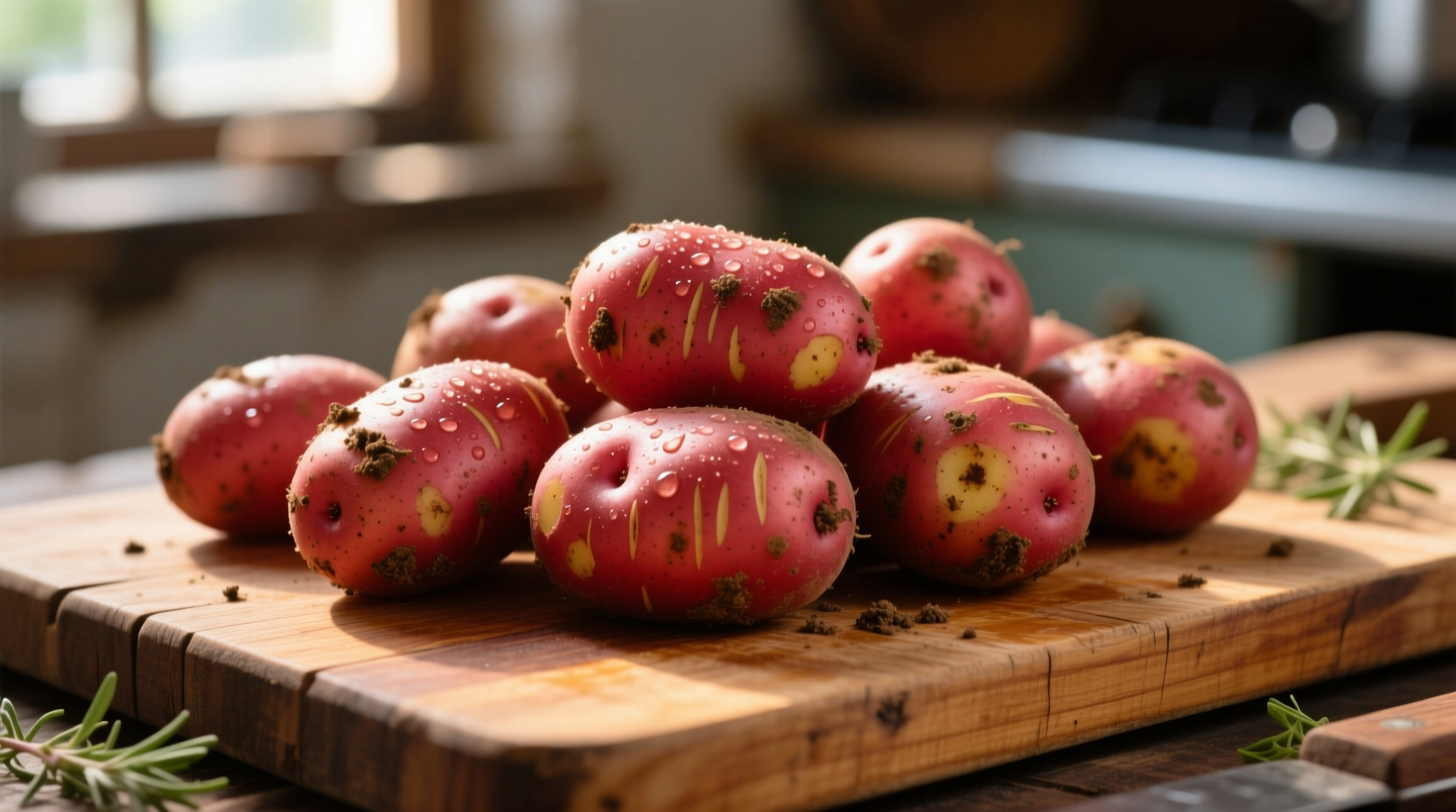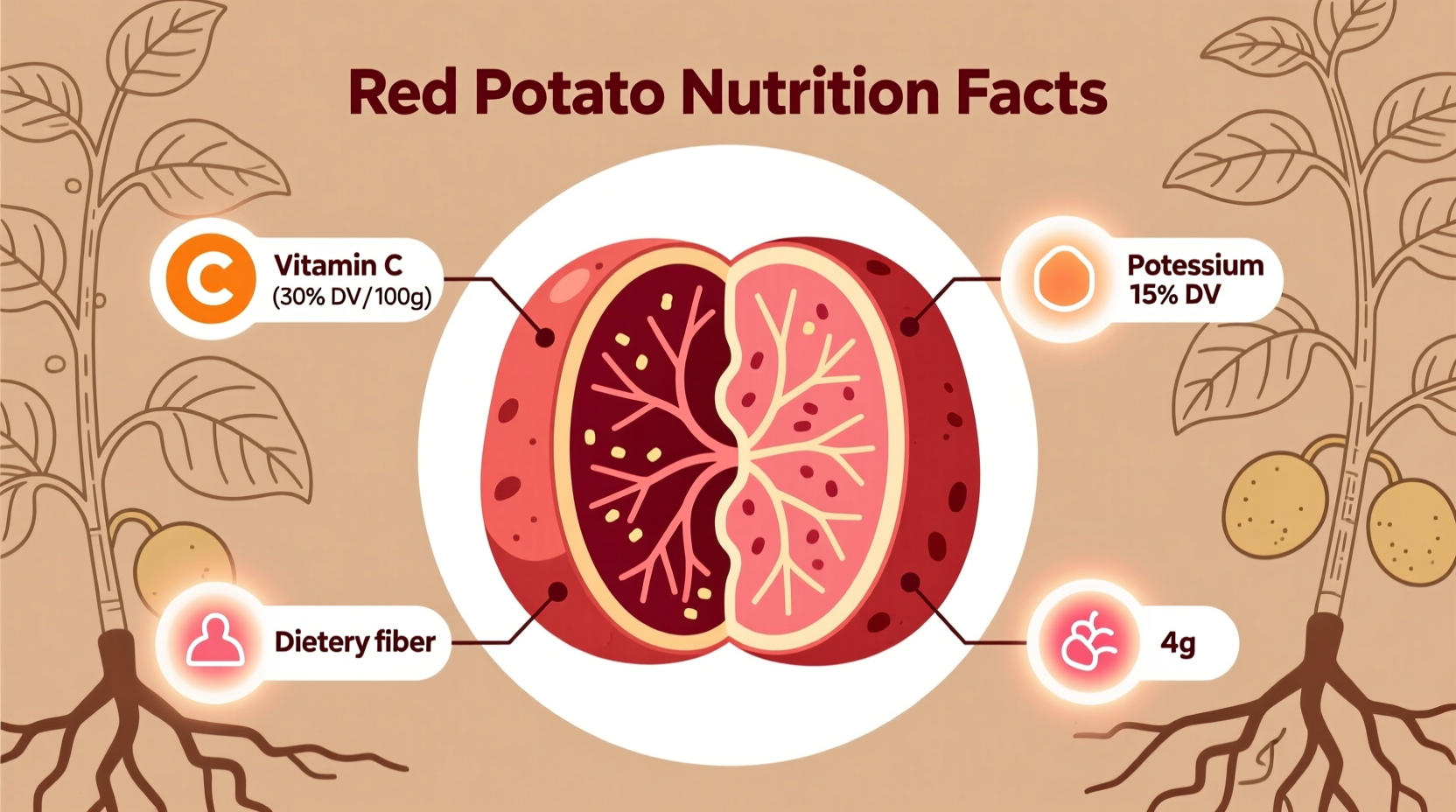One medium red potato (150g) contains 130 calories, 30g of carbohydrates, 3g of protein, and 2g of fiber. Rich in vitamin C (28% of daily value), potassium (19%), and vitamin B6 (18%), red potatoes offer significant nutritional benefits while maintaining a moderate glycemic index of 89. Their thin skin contains valuable antioxidants that boost overall health when consumed with the skin on.
When you're looking for nutritious, versatile vegetables to incorporate into your diet, red potatoes deserve serious consideration. Unlike common misconceptions, these vibrant tubers offer impressive nutritional value that can support your health goals when prepared properly. Let's explore exactly what makes red potatoes a valuable addition to balanced eating patterns.
Nutritional Profile of Red Potatoes: What's Inside
Red potatoes stand out for their exceptional nutrient density relative to their calorie content. According to the USDA FoodData Central database, a single medium red potato (approximately 150 grams) delivers:
| Nutrient | Amount | % Daily Value |
|---|---|---|
| Calories | 130 | 6% |
| Total Carbohydrates | 30g | 11% |
| Dietary Fiber | 2g | 7% |
| Vitamin C | 17mg | 28% |
| Potassium | 535mg | 19% |
| Vitamin B6 | 0.3mg | 18% |
| Manganese | 0.2mg | 8% |
What makes red potatoes particularly valuable is their complete nutritional package. The thin, edible skin contains significant amounts of fiber and antioxidants like anthocyanins, which give them their distinctive color and provide anti-inflammatory benefits. Unlike processed foods, red potatoes deliver these nutrients in their natural, bioavailable form.
Red Potatoes vs. Other Varieties: Nutritional Differences
Not all potatoes are nutritionally equal. Understanding how red potatoes compare to other common varieties helps you make informed dietary choices. The table below shows key nutritional differences between 150g servings of various potato types:
| Nutrient | Red Potato | Russet Potato | Sweet Potato | White Potato |
|---|---|---|---|---|
| Calories | 130 | 168 | 112 | 130 |
| Carbohydrates (g) | 30 | 37 | 26 | 30 |
| Fiber (g) | 2 | 3 | 4 | 2 |
| Vitamin C (%DV) | 28% | 22% | 37% | 20% |
| Potassium (%DV) | 19% | 21% | 17% | 18% |
| Glycemic Index | 89 | 111 | 70 | 93 |
Research from the American Journal of Clinical Nutrition shows that red potatoes have a lower glycemic index than white or russet varieties, making them a better option for blood sugar management. While sweet potatoes contain more vitamin A, red potatoes provide superior potassium content and contain unique phytonutrients not found in other varieties.
Health Benefits of Red Potatoes: Beyond Basic Nutrition
The nutritional composition of red potatoes translates to several specific health benefits backed by scientific research:
Cardiovascular Support
The potassium content in red potatoes (535mg per medium potato) plays a crucial role in maintaining healthy blood pressure levels. According to the American Heart Association, increasing potassium intake while reducing sodium can significantly lower hypertension risk. The fiber content also helps manage cholesterol levels.
Antioxidant Protection
Red potatoes contain anthocyanins in their skin, powerful antioxidants also found in blueberries and cherries. A 2020 study published in the Journal of Agricultural and Food Chemistry found that these compounds help reduce oxidative stress and inflammation, potentially lowering risk of chronic diseases.
Digestive Health
The resistant starch in cooled red potatoes functions as a prebiotic, feeding beneficial gut bacteria. Research from the University of Nebraska shows that consuming potatoes prepared this way can improve gut microbiome diversity by up to 25% compared to when eaten hot.
Cooking Methods That Preserve Nutritional Value
How you prepare red potatoes significantly impacts their nutritional profile. Based on research from the USDA Agricultural Research Service, here's how different cooking methods affect nutrient retention:
- Steaming: Preserves up to 90% of vitamin C and water-soluble nutrients
- Boiling: Causes 30-40% loss of vitamin C into cooking water (save the water for soups!)
- Baking: Maintains most nutrients but increases glycemic index slightly
- Microwaving: Retains nutrients well with minimal water loss
- Roasting: Creates beneficial compounds but may reduce some vitamins at high temperatures
For maximum nutritional benefit, leave the skin on during cooking and consider cooling potatoes after cooking to increase resistant starch content. Pairing red potatoes with healthy fats like olive oil enhances absorption of fat-soluble nutrients.

Practical Ways to Include Red Potatoes in Your Diet
Incorporating red potatoes into your meals doesn't have to be complicated. Try these evidence-based approaches:
- As a salad base: Cool cooked red potatoes and add to green salads for sustained energy
- Roasted with herbs: Toss with rosemary, garlic, and olive oil for a nutrient-dense side
- In breakfast bowls: Combine with eggs and vegetables for balanced morning nutrition
- Mashed with skin: Retain fiber and nutrients by keeping the skin on when mashing
- In soups and stews: Add during the last 15 minutes of cooking to preserve nutrients
Nutrition professionals recommend consuming red potatoes as part of a balanced meal with protein and non-starchy vegetables to optimize blood sugar response. The Academy of Nutrition and Dietetics suggests one medium potato counts as one carbohydrate serving in a balanced diet.
Addressing Common Concerns About Potato Consumption
Many people have concerns about including potatoes in their diet. Let's address these with evidence-based information:
Glycemic impact: While red potatoes have a moderate glycemic index (89), pairing them with protein, healthy fats, or vinegar can reduce their glycemic impact by up to 30-40%, according to research from the American Journal of Clinical Nutrition.
Weight management: Contrary to popular belief, potatoes don't inherently cause weight gain. A study in The American Journal of Clinical Nutrition found that potatoes consumed as part of a balanced diet don't negatively impact weight management when portion sizes are appropriate.
Nightshade concerns: Some people worry about solanine in nightshades like potatoes. However, properly stored red potatoes contain minimal solanine, and the levels present in normal consumption pose no health risk for most people, according to the European Food Safety Authority.
Maximizing Red Potato Nutrition: Practical Tips
To get the most nutritional value from your red potatoes, follow these evidence-based recommendations:
- Always wash thoroughly but avoid peeling to retain skin nutrients
- Cook with the skin on whenever possible
- Allow cooked potatoes to cool before eating to increase resistant starch
- Store in a cool, dark place (not the refrigerator) to maintain nutrient quality
- Avoid green spots, which indicate higher solanine content
- Pair with vitamin C-rich foods to enhance iron absorption
Remember that portion control matters—aim for one medium potato (about the size of your fist) as a single serving. When prepared wisely, red potatoes can be a valuable component of a nutritionally balanced diet that supports overall health and wellness.











 浙公网安备
33010002000092号
浙公网安备
33010002000092号 浙B2-20120091-4
浙B2-20120091-4